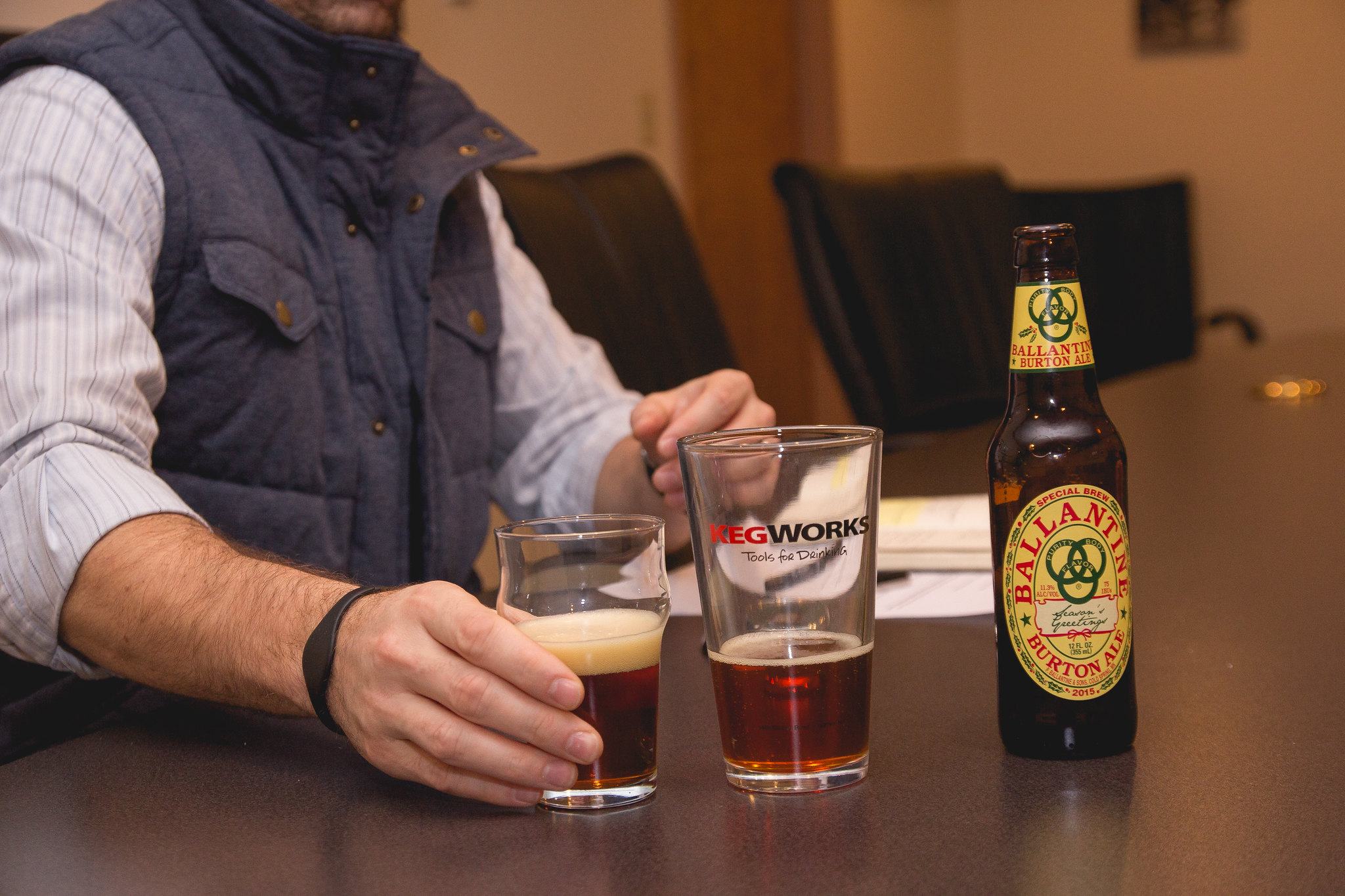
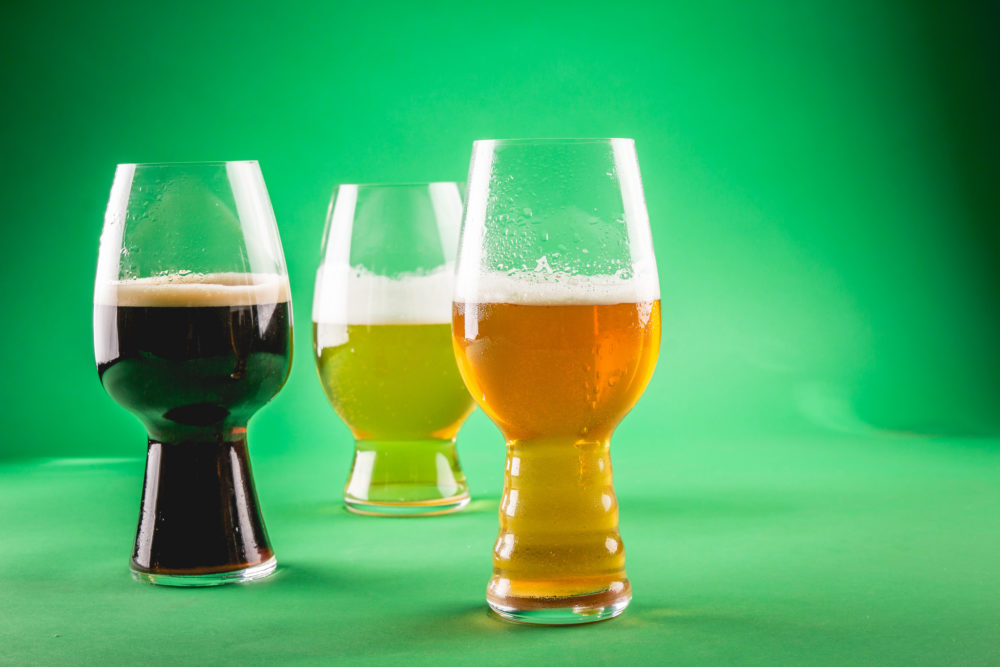
For centuries, the majority of beer styles produced in Europe and North America traditionally fell into one of two categories: ale or lager. The distinction has long been based on differences in yeast strains and fermentation temperatures. Ales and lagers cannot be distinguished based on appearance or flavor profile. Beers in both categories can be pale, dark, hoppy, malty, clear, hazy, strong, or light depending on a number of other factors.
Table of Contents
An Increasingly Nebulous Distinction
Despite the ubiquity of the binary, the ale / lager distinction is a cloudy one, with many beers straddling both traditions. Kolsch, for example, relies on ale yeast strains but ferments at lager-friendly temperatures. And many brewers use previously unknown or unused yeast strains that defy strict categorization. Wild and sour beers, which rely on spontaneously occurring yeast and bacteria, are one popular example.
That said, the terminology is still around, so it is useful to understand the traditional differences between lagers and ales. Let’s break them down.
What Is the Difference Between Ales and Lagers?
Yeast
Historically speaking, the main difference between ales and lagers is the yeast used in the brewing process. An ale typically relies on yeast strains within the Saccharomyces cerevisiae species. S. cerevisiae strains have been used throughout human history not only for beer but also for bread and wine. They are said to be “top-fermenting” because the foamy head that forms on the beer during fermentation (called krausen) is especially fluffy and pronounced with S. cerevisiae. This gives the appearance that most of the fermentation activity is occurring at the beer’s surface.
For lagers, the yeast of choice has been Saccharomyces pastorianus. It is thought to be a hybrid of S. cerevisiae and Saccharomyces eubayanus. The latter is a cold-resistant yeast from Patagonia that presumably made its way to Europe during the Renaissance period by way of transatlantic ships. Soon enough, said yeast showed up in the caves where Bavarians fermented beer. In these relatively cold environments, S. eubayanus was favored over more temperature-sensitive yeast species. The hybrid that resulted from this natural selection process, S. Pastorianus, is commonly said to be a “bottom-fermenting” yeast species because it does not appear to be actively fermenting on the surface of the beer.
Fermentation Temperature
Most ale yeast strains ferment somewhere between 60 and 78°F. Conversely, lager yeast performs best if left to ferment in the 45 to 55°F range. In colder temperatures, chemical reactions are slower, so lagers ferment for a longer period of time.
The warm, relatively quick fermentation of ales typically produces more pronounced ester and phenol byproducts. Brewers use warm fermentation temperatures to manipulate the formation of these compounds to produce desirable complexity in their ales.
The cold fermentation of lagers suppresses these particular byproducts of fermentation. That's why lagers are generally thought of as clean, crisp, and refreshing. At the same time, diacetyl, another byproduct of fermentation, is processed and reduced more slowly at cold temperatures, requiring a period of maturation called diacetyl rest. During this stage, the yeast is given the opportunity to consume the diacetyl it created during fermentation, ensuring the beer isn’t contaminated with an off-putting butterscotch flavor. Brewed according to tradition, the flavor and aroma of lagers should largely be informed by the malt and hops in the recipe.
For the above reasons, critics sometimes deride lagers as “fizzy, yellow water.” However, brewing a lager with a squeaky clean flavor profile is as impressive of a feat as brewing a rich and complex ale.
Lagering
Lagering, from the German word lagern (“to store”), is a period of cold storage closely associated with lagers. It occurs after fermentation and diacetyl rest. During lagering, a beer is aged for two weeks or more at a temperature somewhere in the range of 32 to 40 degrees F. This step encourages sediment to fall out of solution (flocculation), resulting in a clear beer. The time spent aging also mellows any flavors or aromas that might detract from a lager’s characteristically clean and crisp profile.
A lager is always lagered, but not all lagered beers are lagers. Any beer, even an ale, can undergo cold storage.
What Are Some Examples of Ales?
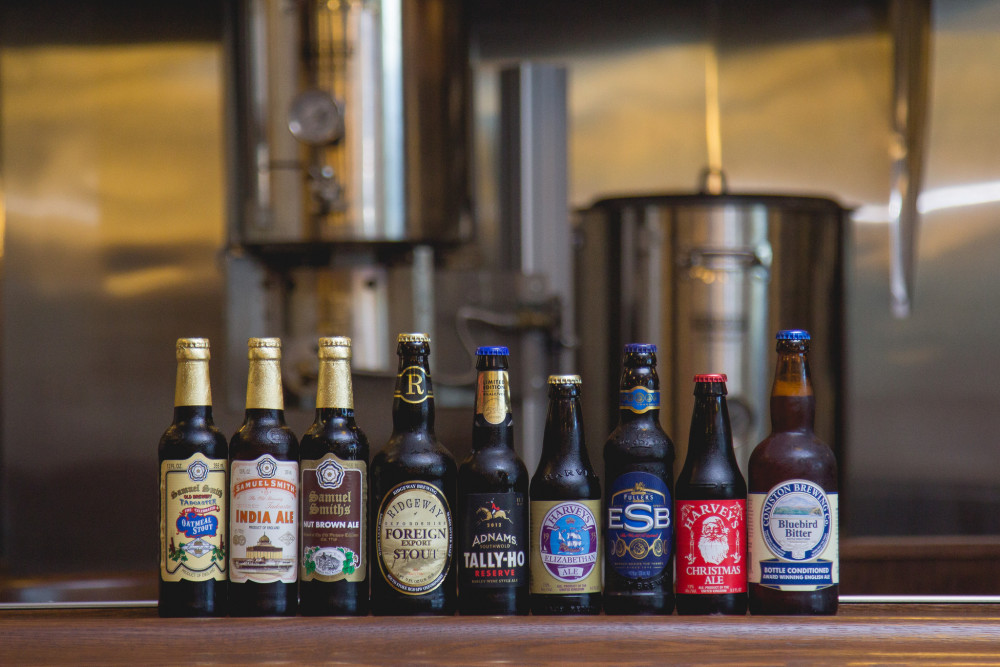
Brewers were making ales for centuries before cold-resistant yeast made its way to Europe, so many time-honored, traditional British, French, and Belgian beer styles fall within the ale category. Below are just a few.
English Bitter
English bitter is a catchall term for a family of ales that include ordinary bitters, strong bitters, and best bitters. They are not as bitter as the name insinuates; rather, that descriptor was a point of comparison with the lightly hopped mild ales and porters and stouts that dominated the English beer scene prior to the late 19th century. They are closely related to pale ales but depart in color thanks to the addition of brown malt, prior to World War I, and crystal malt thereafter. English bitters are traditionally cask pulled.
Brown Ale
Brown Ales are defined by an amber to dark brown color that can be cloudy in some varieties. Expect a complex body and more malt than hops here, with fruity or nutty aromas and flavors, and ABVs between 4% and 6%.
Stout
Stouts are cold-weather favorites thanks to their characteristic toasted malt flavors enhanced with notes of cocoa, coffee, or toffee. They achieve their distinctive dark brown to jet black color from the addition of long-roasted, charred barley in the mash tun. Brewers will hop a stout recipe according to their own tastes, so you might pick up some hoppy bite.
Barley Wine
Barleywine is an amber to dark brown beer perfectly suited for the winter season. It is defined by its heavy body and high alcohol content, with ABVs clocking in between 8% and 12%, or more. With a thick body and not too much carbonation, look for intense malt character and a fruity finish.
India Pale Ale
The ever-popular India Pale Ale has a characteristic ultra-hopped, lightly malted body. Coloration almost always appears gold to light copper and tends to have a hazy finish. As compared to American IPAs, the English version is typically more malt-forward and offers a less aggressive hop profile that tends to be more earthy and floral (as compared to citrusy or piney).
Hefeweizen
Hefeweizens, or “yeast-wheats,” derive tart, spicy, and fruity flavor from high contents of bold, active yeast strains. Pale yellow to honey color and sometimes cloudy in appearance, hefeweizens often have a fizzy head that keeps its place throughout your session. Banana and clove flavors are definitive of the style.
What Are Some Examples of Lagers?
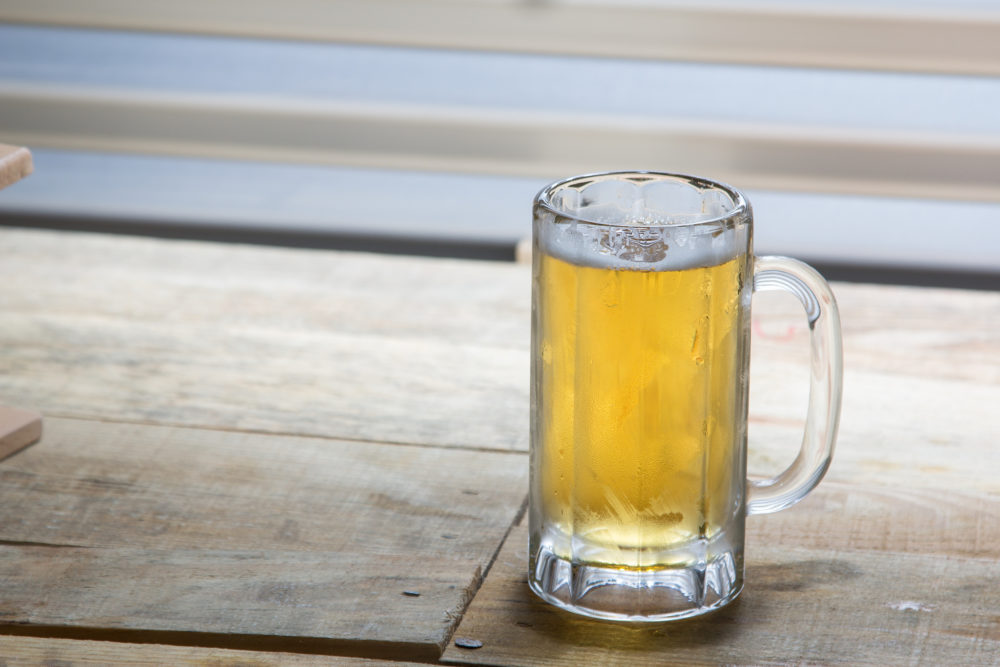
Budweiser, Coors, Labatt and other major players on the global market are famous for lagers, which trace their origin to Bavarian brewing traditions. Below are some specific beer styles that fall within the lager family.
Pilsner
The “pils” might be Germany’s most popular lager export. Ranging in color from pale straw to yellowish gold, pilsners are notable for crisp, floral aroma and finish with a zesty, bitter mouthfeel. Its light, crisp texture make a cold pils a great summertime pick for a barbeque.
Dortmunder
Germany’s Dortmunder Union brewery gave us this beer—once made by and for the working class—a century ago. Now, we find this malty, crisp, refreshingly dry German-style lager poured in brewpubs and bars all over the United States. The appeal of a “dort” is its aromatic flavor derived from noble hops, and its light, clean, golden appearance.
Märzen / Oktoberfest
Märzen were traditionally brewed in March to be enjoyed at festivals starting in September. It is defined by a clear, copper to reddish brown appearance and toasted, malty, mildy hoppy flavor that rounds out between 4% and 7% ABV.
Schwarzbier
Schwarzbier translates to “black beer” and gets its dark appearance from long-roasted malts. Despite its appearance, it has a lighter-than-expected flavor profile and “twang,” the latter of which is likely due to its roast-based acidity inside of a relatively thin body/malt profile. You will definitely taste notes of chocolate within this malty brew, but without any harsh, burnt aftertaste.
Bock
Sometimes a malty, full-bodied bock can feel almost like a meal in itself, which keeps with the old legend that Bavarian monks subsisted on bock during long spells of fasting. They typically weigh in at somewhere between a 5% to 7% ABV, and boast a sweet, toasty, nutty aroma.


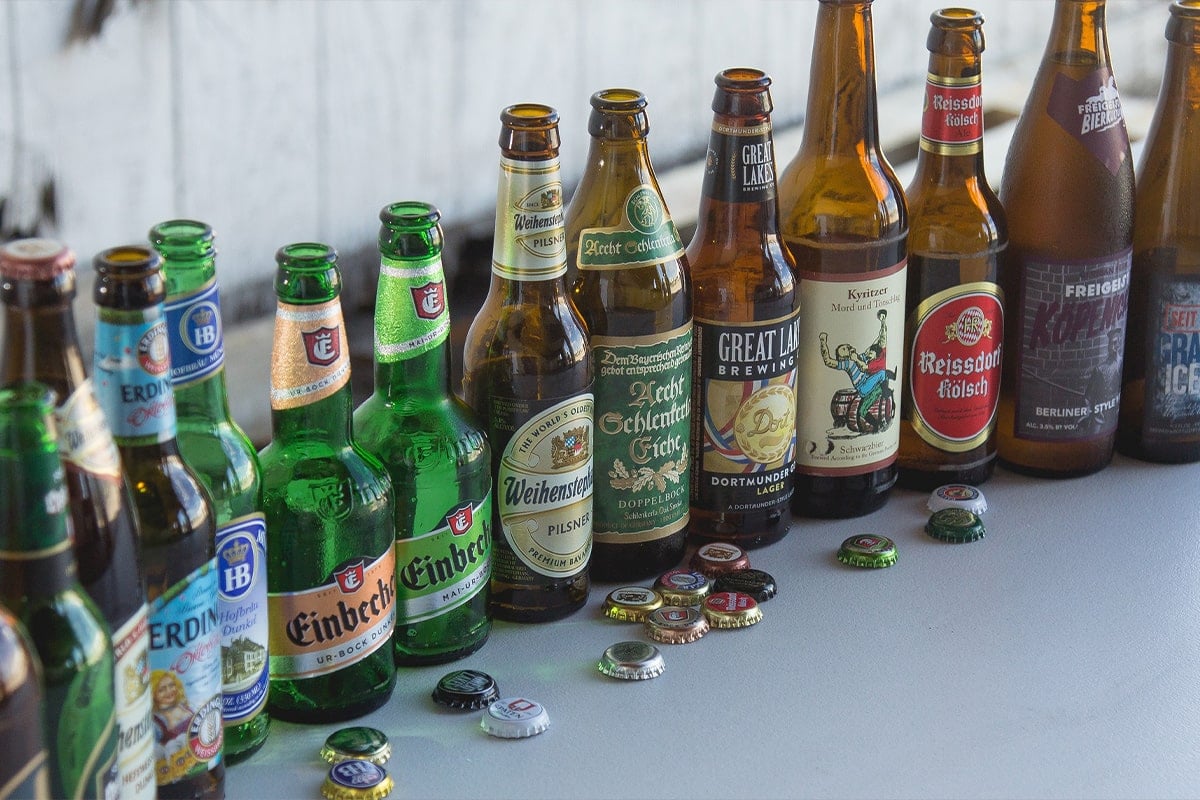
Leave a Comment